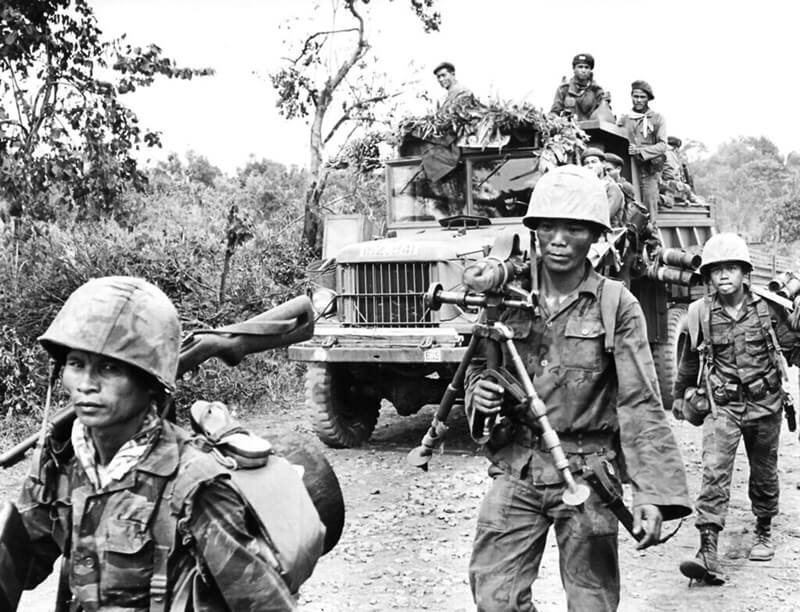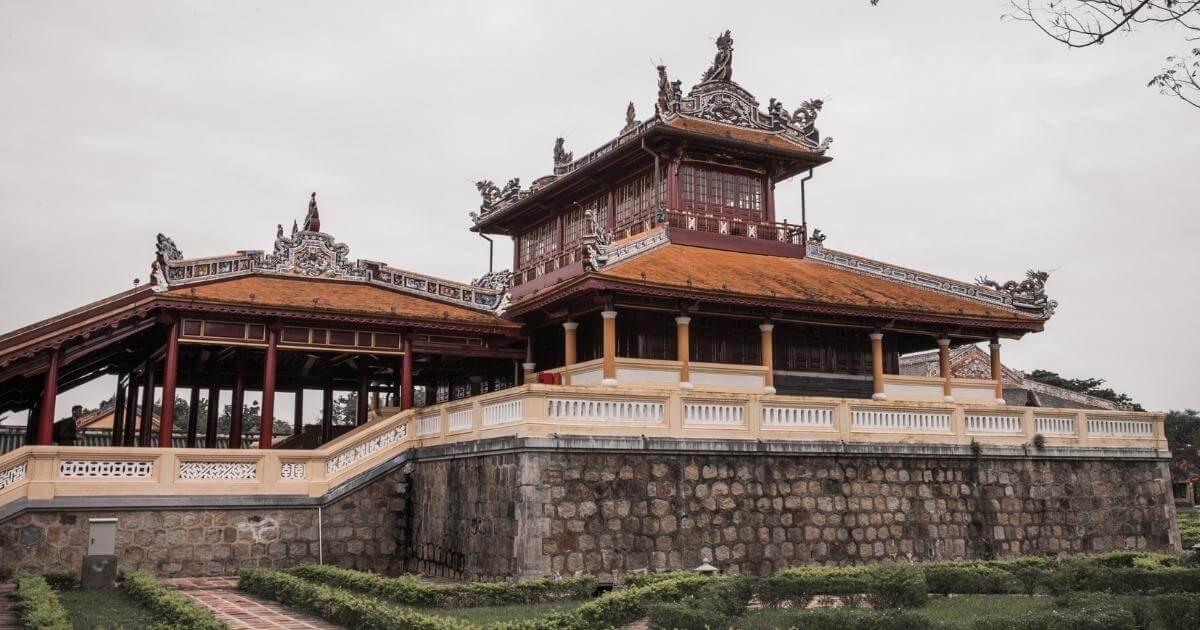When most people think of Vietnam, they think of the war. However, it is important to know that Vietnam has a long history – one that goes back long, long before there was any Vietnam War. As you will read, Vietnam’s history is rich with legend, tradition, determination, adaptation. Further, in order to fully understand the history and consequence of the Vietnam War, it’s critical to first understand Vietnam’s history.
We can summary the history of Vietnam in below formula:

2000 + 1000 + 900 + 80 + 30 + 40
- More than 2000 years BC (2879–207 BC): period of formation of the country (Hong Bang dynasty, civilization of Viet’s Red River), age of bronze and iron, period of Dong Son bronze.
- More than 1000 years AD (111 – 938): period of Chinese domination
- 900 years: national independence, national dynasties and the expansion country to the South, influence of Chinese culture to Vietnam, resistance war against invaders, civil wars.
- 80 years (1862 – 1945): French colonization (the first time they arrived in Vietnam in 1858), Japanese occupation (1940-1945)
- 30 years (1945 – 1975): war of independence (August revolution 1945-1954) resistance war against French, great victory at the battle Dien Bien Phu. Resistance war against American (1954 – 1975) Vietnam War ended in 1975, liberation of Sai Gon.
- 40 years till now: Socialist Republic, period of renovation, development of country.
In the beginning
King Duong Vuong as the first leader of the unified ancient Vietnamese nation succeeded in grouping all the vassal states within his territory at around 2879 BC. King Duong Vuong called his newly born country Xich quy and reigned over confederacy that occupied the Red river delta in present day Northern Vietnam and part of southeastern China, seeing the beginning of nationhood for Vietnam under one supreme ruler, The Hung Kinh, also starting the Hong Bang period.
According to traditional legend, Vietnam was formed when King Lac Long Quan – Kinh Duong Vuong’s son (also known as the Dragon Lord of Lac or the Dragon lord of the seas) married Princess Au Co (a Chinese immortal and descended from the high mountains) dragon father and fairy mother. She bore him 100 eggs, out of which 100 son were born. They soon established a nation that stretched from southern china to northern Indonesia.
However the king and the princess became convinced that their different origins would ultimately make them unhappy, so they separated, Princess Au co took 50 of the son with her back into the mountains while King Lac long quan took the other 50 sons and ruled over the lowlands. After the King died in 2879 BC, his eldest son, Hung Vuong established the Hung dynasty, and his is regarded as the real founder of the Vietnamese nation and of the first Vietnamese dynasty – the Hong Bang period was divided into 10 dynasties, with each dynasty being based on the lineage of the kings, ruled for 150 years. The ancient Vietnamese rulers of this period are collectively known as Hung Kings. At this time, the nation named Van Lang.
During nearly 1000 years of history (938 – 1802), the state of Dai Viet had lasted for Ngo (938- 967), Dinh (968 – 980), Le (980 – 1009), Ly Dynasty (1009-1225), Tran Dynasty (1226 – 1400), Ho Dynasty (1400 – 1407), Later Le Dynasty (1428 – 1527), Mac Dynasty (1527 – 1592), Trinh – Nguyen Lords (1533 – 1789) and Tay Son Dynasty (1778 – 1802). Under Tran Dynasty, Dai Viet was a wealthy country. During the Tran Dynasty, the armies of the Mongol empire under Mongke KHAN and Kulblai Khan invaded Vietnam in 1258, 1285 and 1287,88. Dai Viet repelled all attacks of the Yuan Mongols during the reign of Kublai Khan.

Emperor Le Dai Hanh under Le Dynasty was also the first Vietnamese monarch who began the southward expansion process against the kingdom of Champa.
Many civil war between dynasties lasted for a long time. The Trinh – NGUYEN war lasted from 1627 – 1672. The country was effectively divided in two.
1858 – 1945: Nguyen Dynasty
French protectorate
1858 – French colonial rule begins.
1930 – Ho Chi Minh founds the Indochinese Communist Party (ICP).
1941 – ICP organizes a guerrilla force, Viet Minh, in response to invasion by Japan during World War II.
1945 – The Viet Minh seizes power. Ho Chi Minh announces Vietnam’s independence.
1946 – French forces attack Viet Minh in Haiphong in November, sparking the war of resistance against the colonial power.
1950 – Democratic Republic of Vietnam is recognized by China and USSR.
1954 – Viet Minh forces attack an isolated French military outpost in the town of Dien Bien Phu. The attempt to take the outpost lasts two months, during which time the French government agrees to peace talks in Geneva.
Vietnam is split into North and South at Geneva conference.
1956 – South Vietnamese President Ngo Dinh Diem begins campaign against political dissidents
Vietnam War
1957 – Beginning of Communist insurgency in the South.
1959 – Weapons and men from North Vietnam begin infiltrating the South.
1960 – American aid to Diem increased.
1962 – Number of US military advisors in South Vietnam rises to 12,000.
1963 – Viet Cong, the communist guerrillas operating in South Vietnam, defeat units of the ARVN, the South Vietnamese Army.
President Diem is overthrown and then killed in a US-backed military coup.
US enters the war
1964 – Gulf of Tonkin incident: the US says North Vietnamese patrol boats fire on two US Navy destroyers. US Congress approves Gulf of Tonkin Resolution, authorizing military action in region.
1965 – 200,000 American combat troops arrive in South Vietnam.
1966 – US troop numbers in Vietnam rise to 400,000, then to 500,000 the following year.
1968 – Tet Offensive – a combined assault by Viet Cong and the North Vietnamese army on US positions – begins. More than 500 civilians die in the US massacre at My Lai. Thousands are killed by communist forces during their occupation of the city of Hue.
1969 – Ho Chi Minh dies. President Nixon begins to reduce US ground troops in Vietnam as domestic public opposition to the war grows.
1970 – Nixon’s national security advisor, Henry Kissinger, and Le Duc Tho, for the Hanoi government, start talks in Paris.
1973 – Ceasefire agreement in Paris, US troop pull-out completed by March.
1975 – North Vietnamese troops invade South Vietnam and take control of the whole country after South Vietnamese President Duong Van Minh surrenders.
Reconstruction
1976 – Socialist Republic of Vietnam proclaimed. Saigon is re-named Ho Chi Minh City. Hundreds of thousands flee abroad, including many “boat people”.
1979 – Vietnam invades Cambodia and ousts the Khmer Rouge regime of Pol Pot. In response, Chinese troops cross Vietnam’s northern border. They are pushed back by Vietnamese forces. The number of “boat people” trying to leave Vietnam causes international concern.
1986 – Nguyen Van Linh becomes party leader. He introduces a more liberal economic policy.
1989 – Vietnamese troops withdraw from Cambodia.
1992 – New constitution adopted allowing certain economic freedoms. The Communist Party remains the leading force in Vietnamese society
